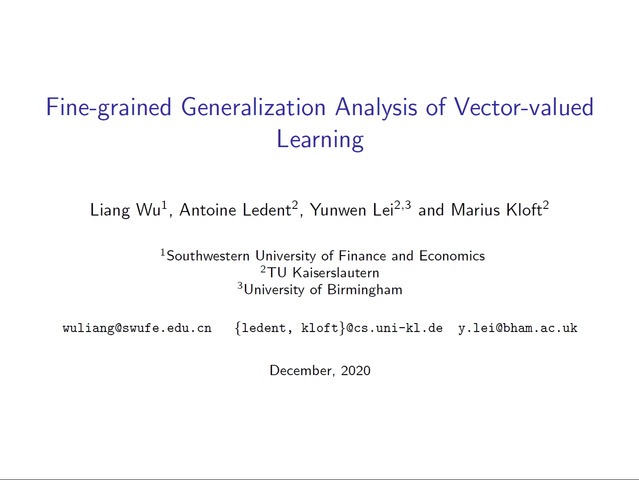Abstract:
We consider the problem of learning a mixture of linear regressions (MLRs). An MLR is specified by k nonnegative mixing weights p1, …, pk summing to 1, and k unknown regressors w1,...,wk∈ℝd. A sample from the MLR is drawn by sampling i with probability pi, then outputting (x, y) where y = ⟨ x, wi ⟩ + η, where η∼(0,ς2) for noise rate ς. Mixtures of linear regressions are a popular generative model and have been studied extensively in machine learning and theoretical computer science. However, all previous algorithms for learning the parameters of an MLR require running time and sample complexity scaling exponentially with k. In this paper, we give the first algorithm for learning an MLR that runs in time which is sub-exponential in k. Specifically, we give an algorithm which runs in time O(d)·exp(O(√k)) and outputs the parameters of the MLR to high accuracy, even in the presence of nontrivial regression noise. We demonstrate a new method that we call “Fourier moment descent,” which uses univariate density estimation and low-degree moments of the Fourier transform of suitable univariate projections of the MLR to iteratively refine our estimate of the parameters. To the best of our knowledge, these techniques have never been used in the context of high dimensional distribution learning, and may be of independent interest. We also show that our techniques can be used to give a sub-exponential time algorithm for a natural hard instance of the subspace clustering problem, which we call learning mixtures of hyperplanes.









































